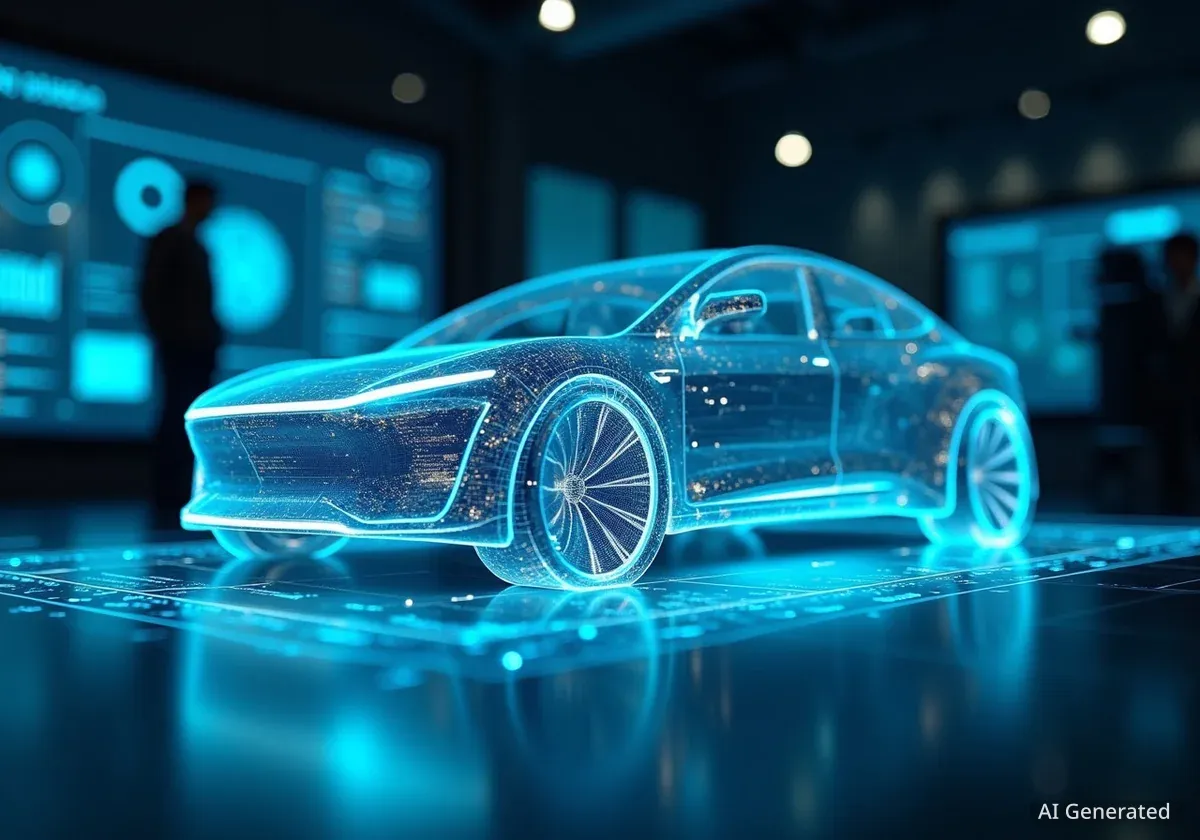Porsche has significantly altered its vehicle development process for the upcoming all-electric Cayenne, leveraging artificial intelligence and comprehensive digital simulations. This new approach allowed the company to bypass an entire physical prototype stage, leading to a faster and more resource-efficient production timeline.
The automaker confirmed that this strategy reduced the development time by approximately 20% and eliminated the need to build and test around 120 early-stage prototypes. The electric Cayenne is the first vehicle in Porsche's history to move directly from digital testing to the pre-series production phase.
Key Takeaways
- Porsche's electric Cayenne skipped the early physical prototype stage entirely due to advanced digital testing.
- The use of AI and simulations shortened the development cycle by around 20%.
- This new method prevented the construction and subsequent destruction of approximately 120 prototype vehicles.
- The Cayenne EV will be built on the 800-volt Scalable Systems Platform (SSP) and is expected to be unveiled by the end of the year.
A Shift in Automotive Prototyping
Porsche has implemented a groundbreaking development strategy for its first all-electric Cayenne SUV. By relying heavily on virtual testing, the company has made a significant departure from traditional automotive engineering practices that depend on numerous physical models for validation.
This digital-first approach marks a pivotal moment for the manufacturer. "This project was the first in which we went directly from digital complete vehicle testing to pre-series production," stated Michael Steiner, Porsche's Deputy Chairman. This move underscores a broader industry trend towards virtualization to accelerate innovation.
What is the Scalable Systems Platform (SSP)?
The Cayenne EV utilizes the same 800-volt Scalable Systems Platform (SSP) as the electric Macan. This advanced architecture is designed to support high-performance electric vehicles, enabling rapid charging capabilities and flexible vehicle designs across different models in the Volkswagen Group portfolio.
The decision to eliminate the early prototype phase was not just about speed. It also had considerable environmental and financial benefits. By not building 120 physical vehicles for initial testing, Porsche conserved a significant amount of materials and reduced the overall environmental footprint of the development cycle.
The Role of AI and Digital Twins
At the core of this new process are sophisticated computer simulations and artificial intelligence. Engineers created highly detailed "digital twins" of the Cayenne EV, allowing them to conduct extensive testing in a virtual environment long before any physical parts were manufactured.
"Engineers sent virtual prototypes on digital test drives as early as the design phase," Porsche explained in a statement. These digital test drives included subjecting the virtual vehicle to various conditions and scenarios on precise digital replicas of real-world locations, including the famed Nürburgring Nordschleife track.
By the Numbers: Virtual Development
- 120 physical prototypes were avoided.
- 20% reduction in development time.
- Countless virtual miles driven before a single real car was built.
While technology plays a larger role, human expertise remains crucial. Sascha Niesen, the head of vehicle testing at Porsche's Weissach Development Center, emphasized the importance of human oversight.
"In reality, only humans can add the final touches."
Niesen's comment highlights that while simulations can validate nearly all aspects of a vehicle's performance, final verification and refinement still rely on the experience of human engineers. The results from digital tests were later cross-referenced with physical tests on individual components at test benches.
Advanced Charging and Performance Goals
Despite the reliance on virtual testing, certain aspects still require real-world validation. Porsche conducted extensive physical tests on later-stage prototypes to perfect the Cayenne EV's charging capabilities, particularly in extreme weather conditions.
The engineering team's goal was to ensure consistent and rapid charging performance regardless of the ambient temperature, without requiring the battery to be preconditioned while driving to a charging station. This is a key differentiator from many current EVs on the market.
According to Porsche engineer Marcus Junige, performance is non-negotiable. "The vehicle must deliver full power under all conditions, as soon as the driver demands it," he said. Junige added, "No matter how the Cayenne was previously driven, it must always be conditioned for fast charging."
Charging Specifications
The Cayenne EV is engineered to be one of the fastest-charging electric vehicles available. Key targets include:
- Peak Charging Power: Expected to reach 400 kW.
- Charging Time: A projected time of just 16 minutes to charge from 10% to 80%.
- Wireless Charging: An optional 11 kW wireless charging system will be offered, which could cost around $8,000, including the charging pad and vehicle hardware.
Future of the Cayenne Model Line
Unlike the Porsche Macan and 718 models, which are transitioning to be fully electric, the Cayenne will continue to offer both internal combustion engine (ICE) and electric variants simultaneously. This dual-powertrain strategy is planned to extend well into the 2030s, providing customers with a choice that suits their needs.
The company is also exploring new features for the electric model, including a simulated engine sound with artificial gear shifts. This feature, which can be turned off, aims to replicate the traditional driving experience for enthusiasts while still offering the silent, instant torque characteristic of EVs.
A Dual-Platform Strategy
By keeping the gasoline-powered Cayenne in its lineup, Porsche is catering to a diverse global market where EV infrastructure and consumer readiness vary. This allows the brand to manage the transition to electrification at a pace dictated by market demand, reducing risk while still pushing forward with its EV technology.
The launch of the electric Cayenne will be a key test for Porsche's new AI-driven development model. The industry will be watching closely to see how a vehicle developed with significantly fewer physical prototypes performs in the real world and how customers respond to the continued availability of its gasoline-powered counterpart.





